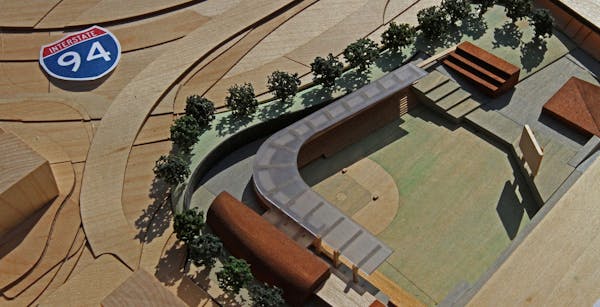The soil where the Lowertown ballpark is to be built in downtown St. Paul is more polluted than city officials believed, adding $8.8 million to the $54 million budget for the project.
In a letter Wednesday to the St. Paul City Council, Parks and Recreation Director Mike Hahm said that "larger amounts of soil at the site are both contaminated and structurally unstable than originally anticipated."
About $6.2 million of the cost overrun is needed to correct soil contamination, move utility lines and "other unforeseen environmental issues."
However, he said the project still remains on track for demolition this summer and the opening of the Saints season in 2015.
Soil borings on the site have shown that pollutants deeply penetrated the soil, officials said. That will force crews to remove more soil from the site than previously thought necessary and also dig a deeper trench than planned for a sanitary sewer line that needs to be re-routed around the site.
The project will transform the former industrial site into a 7,000-seat ballpark that would be home to the St. Paul Saints and annually host more than 100 youth, amateur and college events. Officials say it will draw an estimated 400,000 visitors per year.
Funding for the project includes a $25 million state grant, $17 million in city bonding and $1.5 million from the Saints. The balance will come from assorted funds. Half the bonds will be paid with rent from the Saints.
St. Paul won a $1 million grant from the state last winter to remove contaminants from the 11-acre site.
The city finalized an environmental assessment work sheet (EAW) for the project in April, concluding that a lengthier and more costly enivronmental impact statement (EIS) was unnecessary because of its smaller scale. Officials said the work sheet provided satisfactory answers on questions of traffic, water quality, vehicle emissions and noise.
But some of the work sheet findings have proved controversial, especially its claim that there is more than adequate parking in Lowertown to accommodate ballpark visitors as well as residents, workers and business customers.

Trail section at one of Minnesota's most iconic spots closing for rehab

Will 'shotgun only' zone for deer in southern Minnesota be abolished?

Four Minnesotans catch salmonella in outbreak linked to basil sold at Trader Joe's

